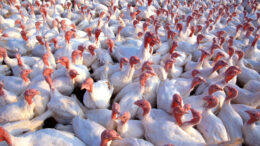Last month a man in Colorado became the first human known to have contracted a new, highly infectious strain of avian flu.
The man — a prisoner culling infected poultry while on a work-release program — only experienced a case of mild fatigue.
The birds contracting this new version of the H5N1 flu have not been so lucky.
Since it first turned up, this highly transmissible and lethal new strain of avian flu has circulated at high rates among domestic fowl on backyard and commercial farms, resulting in the deaths of a reported 37 million birds on farms in the United States alone. Some died directly from the infection, while many others were culled as part of the country’s response to the disease outbreak. Bird flu has spread to at least 176 commercial farms and 134 backyard bird farms, housing mainly poultry like chickens and turkeys, across 34 states. It has hit especially hard in the Midwest and Central United States, regions with intensive commercial poultry operations.
The disease has also turned up in wild birds, with fatal consequences never previously observed. The first confirmed case was reported in a wild bird killed by a hunter and tested in January as part of routine U.S. wildlife-disease surveillance efforts. As of this month, more than 1,000 wild birds across the country have died after being infected.
Wild birds, including many waterfowl species, are often carriers of low-pathogenic or mild bird flu viruses. These viruses rarely cause severe disease in their natural hosts. But lethal bird flu viruses can and do kill wildlife, and this year’s hybrid H5N1 is proving especially deadly to wild birds in the United States and Europe.
It’s also spreading fast: While people have been busy navigating the second year of the global Covid-19 pandemic, this worrying bird virus outbreak has spread in more than 60 countries across Europe, Africa, Asia and the Americas. Many European countries face record-high levels of lethal bird flu.
Repeat Offender
“This clade [family] of H5 viruses has been with us since 1996,” says Bryan Richards, emerging disease coordinator at the U.S. Geological Survey’s National Wildlife Health Center in Madison, Wisconsin. Much of the government’s research on bird flu impacts on wild birds is done by the Geological Survey at the National Wildlife Health Center. “As with all viruses, it has changed over time, as have its relative impacts. Over the past two years or so, this specific H5N1 lineage has had increasing impacts in Europe and Asia. Now that this lineage of virus is here in North America, our experience is similar to that in Europe.”
As the virus rages and government workers deal with the gruesome task of killing infected birds and disposing of the corpses, experts have stood up with one key question:
Why have we allowed this to happen again?
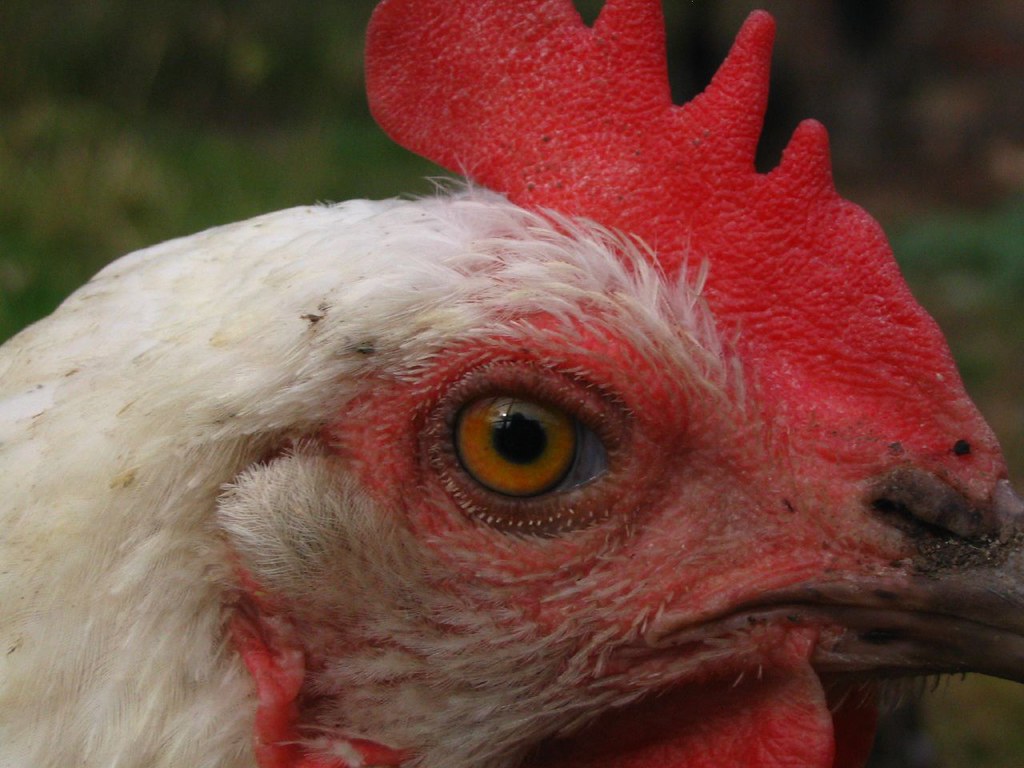
The last time a bird flu epidemic hit this hard in the United States was in 2014-2015. That event, considered the worst-ever animal disease outbreak in U.S. history, struck 211 commercial farms and 21 backyard farms, mainly in the West and Midwest. The government responded by killing tens of millions of domestic birds to try to stop the spread, at huge cost to the federal budget and with no clear beneficial results — the same way it’s responding to the present lethal outbreak.
Then and now, bird flu proves that a reaction-oriented approach to serious viruses emerging at the intersection of human and nonhuman health is inadequate for stopping the spread of disease. Many animal-health and infectious disease experts now underscore the need to prevent rather than fight the next animal disease epidemic.
The Previous (But Not the Last) Outbreak
The 2014-2015 outbreak cost the federal government nearly $900 million to respond to and provide indemnity (financial security) to farmers forced to kill their flocks. Still, U.S. poultry farmers reported economic losses of $1.6 billion, and the poultry industry lost at least $3.3 billion from that single epidemic.
Government staff and scientists examined the outbreak and response strategy to see if they could shed any light to help the country avoid another epidemic. Their final report found that “despite” the government’s massive effort to stop the spread by killing all birds on infected farms, while also using quarantine and disinfection, bird flu continued to swiftly infect huge numbers of domestic birds.
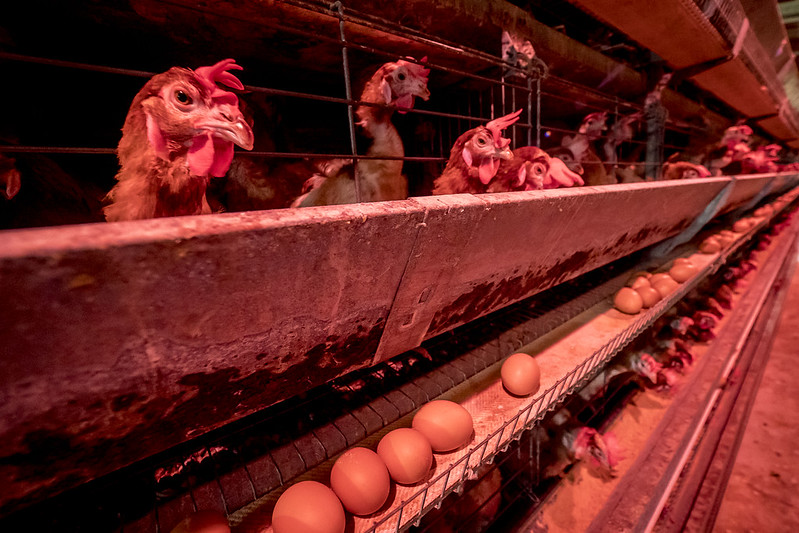
We’re now seeing a repeat of that failed strategy. During the current outbreak, government employees and contractors are again tasked with culling tens of millions of infected domestic birds, mainly poultry like chickens and turkeys. Paying for that plus indemnity to farmers for lost birds has cost the government $400 million in emergency funding since March.
One reason why this response doesn’t work is that wild birds spread bird flu but cannot be contained.
Research shows bird flu can live in the natural environment for extended periods, and healthy wild birds can become infected by living in proximity to those who are ill.
Watching for Danger
As a country we’re constantly on the outlook for warnings of possible new disease outbreaks.
The U.S. Department of Agriculture and Geological Survey, along with their state and Tribal partners, have for decades collaborated to test deceased, hunter-caught and live wild birds for bird flu, especially at areas popular for congregating birds like lakes and wetlands.
That kicked into overdrive this past year. When bird flu cases surged in Europe in 2021, these partners coordinated testing of thousands of additional birds outside their usual quota of about 3,000 samples per year.
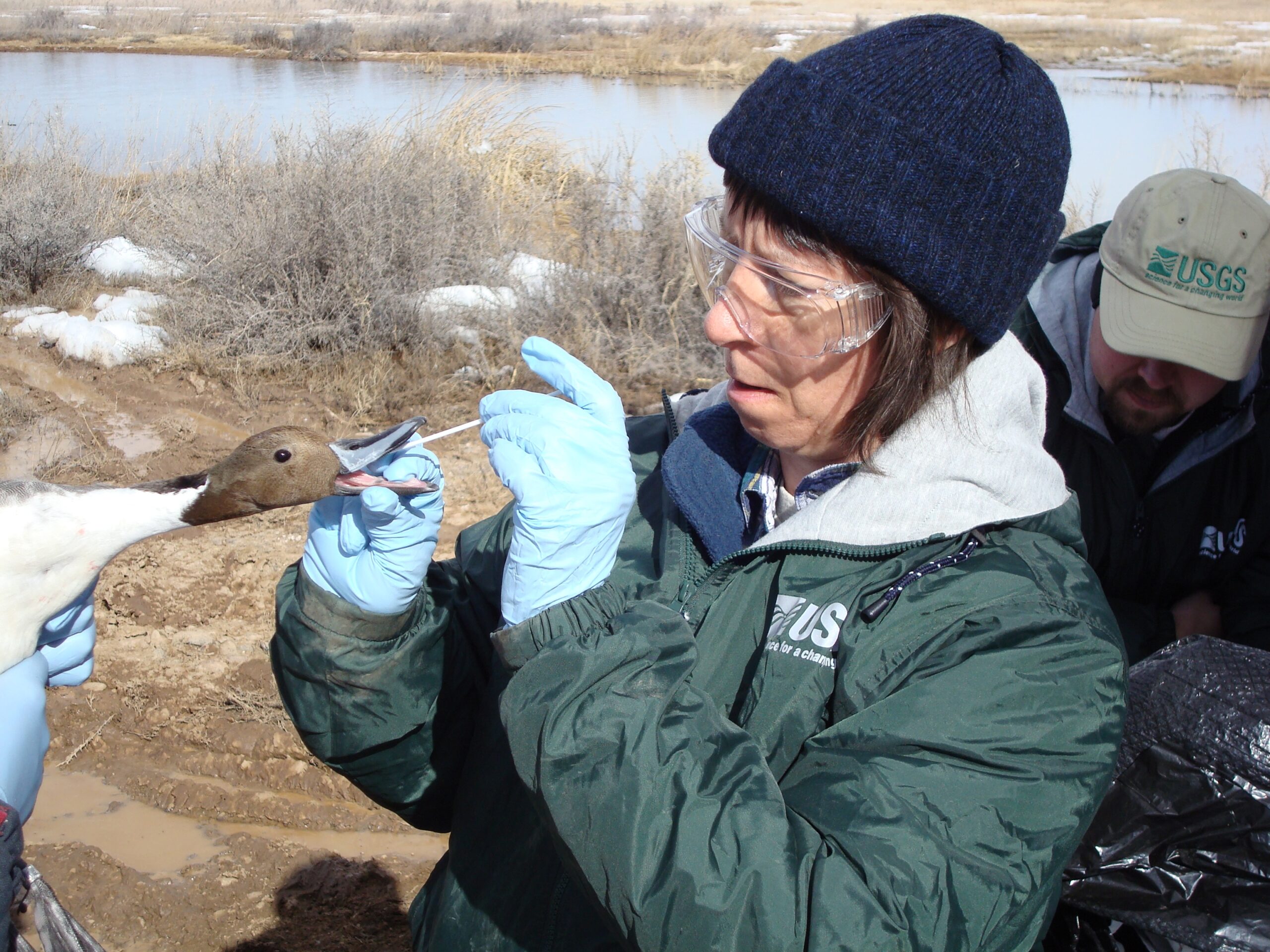
“This year’s surveillance was extremely effective,” says Richards of the USGS. “It provided situational awareness, early detection and warning. We did a dramatic amount surveillance in fall and winter based on the increased activity in Europe. We’ve been watching.”
But watching for outbreaks is not the same as preventing them.
Failure by Design
Some lethal bird flu cases seem to spring from direct interactions between wild and domestic birds. This can happen in backyards and on poultry farms that have full or partial outdoor access.
On farms where birds are kept exclusively indoors, the movement of farmworkers and equipment outdoors and among farms — common practice on some of the biggest poultry operations — can allow lethal bird flu to enter.
While wild birds carry disease, large commercial farms act as super-spreaders and disease incubators.
Laying hens are housed with other birds in wire battery cages, each allotted a space with a footprint smaller than the width of a single sheet of letter-sized paper. Birds are stacked side by side and sometimes on top of one another.
Meanwhile chickens and turkeys raised to be slaughtered and sold for their meat can live in flocks of 10,000 or more birds, who spend their entire lives indoors.
The more birds on a farm, the less natural the living conditions, the lower the costs to keep each bird — and the higher the potential profits in today’s commercial-dominated food landscape.
View this post on Instagram
“As a general principle, once avian influenza outbreaks are present in farms, the disease can spread easily within and between farms when biosecurity measures are not applied properly,” said a spokesperson from World Organisation for Animal Health, an intergovernmental group focused on animal disease control. “On larger farms, where many birds are kept in close contact with one another, the virus can be amplified as more and more birds get infected. With more infections there is also greater opportunity for the virus to mutate.”
Sometimes the virus spreads beyond close contact, as scientists found when they studied the 2014-2015 outbreak in Iowa, which boasts the nation’s highest egg production and has a high density of commercial poultry farms. The researchers discovered a pattern of farm-to-farm spread within the state and possibly even to nearby states, with the virus carried from neighbor to neighbor through the air. It seems disease builds up in the air on large commercial farms, particularly those with poor ventilation and crowded animal conditions — suggesting these farms played a key role in the spread of avian influenza in 2014 and 2015.
All of this has taken avian flu to the next level in terms of infectiousness and time between outbreaks.
Lethal bird flu viruses arose alongside modern agriculture and globalization and continue to emerge at an increasingly rapid pace, along with animal-rearing rates and farm size. Globally, from 1959 to 1995, lethal bird flu viruses broke out at a rate of once every 2.6 years. From 1996 to 2008, outbreaks arose at a rate of once every 1.2 years.
“Industrial livestock production plays an important part in the emergence, spread and amplification of pathogens, some of which can be transmitted to people,” said Peter Stevenson, OBE, chief policy advisor at Compassion in World Farming, a global movement working to advance farm animal welfare and whose work has helped ban some industrial-farming practices seen as unethical and unhealthy, like keeping hens in battery cages, in Europe. He pointed out that the United Nations Environment and the International Livestock Research Institute identified “unsustainable agricultural intensification and increasing demand for animal protein as major drivers of zoonotic disease emergence.”
Unintended Consequences
In the wild, the 2014-2015 outbreak mainly killed waterfowl and birds of prey that had eaten waterfowl. This time around a much wider range of species — about 50 — has been affected, including many kinds of ducks and geese, birds of prey like eagles, hawks and owls, shorebirds like sanderlings and gulls, and vultures, crows and grackles.
When infected, wild birds typically exhibit neurological abnormalities such as lethargy or seizures before succumbing to disease.
“In 2015 there were no major ‘wild bird mortality events,’ ” or situations where masses of birds are found dead in one area,” says Richards. “But now we’ve seen a few: 1,000 lesser scaup dead in Florida, 50 Canada geese dead in New Hampshire; huge numbers of snow geese, Ross’s geese, and Canada geese in the Midwest.”
Wildlife scientists will continue to monitor lethal bird flu and keep track of its spread. What they’ve seen so far is unprecedented, but — having studied bird flu’s seasonal patterns — scientists expect at least somewhat of an ebb and flow of disease in the coming months.
“Now it is moving north, but we expect it will come back south in the fall with migration again,” says Richards. “It’s a safe bet there will be a lot of surveillance as they migrate south in the fall.”
An Uncertain Future
U.S. agencies and the international OIE reiterate in their lethal bird-flu communications that it’s essential farms and farm employees take disease-preventing precautions — termed “biosecurity” — to slow and ultimately help stop the spread.
However, biosecurity measures — including changing clothes before and after interacting with poultry and frequent disinfecting of boots, tools, and other equipment — are all voluntary and so not easily enforced, especially on large farms with many employees and many birds. That needs to be addressed, experts say.
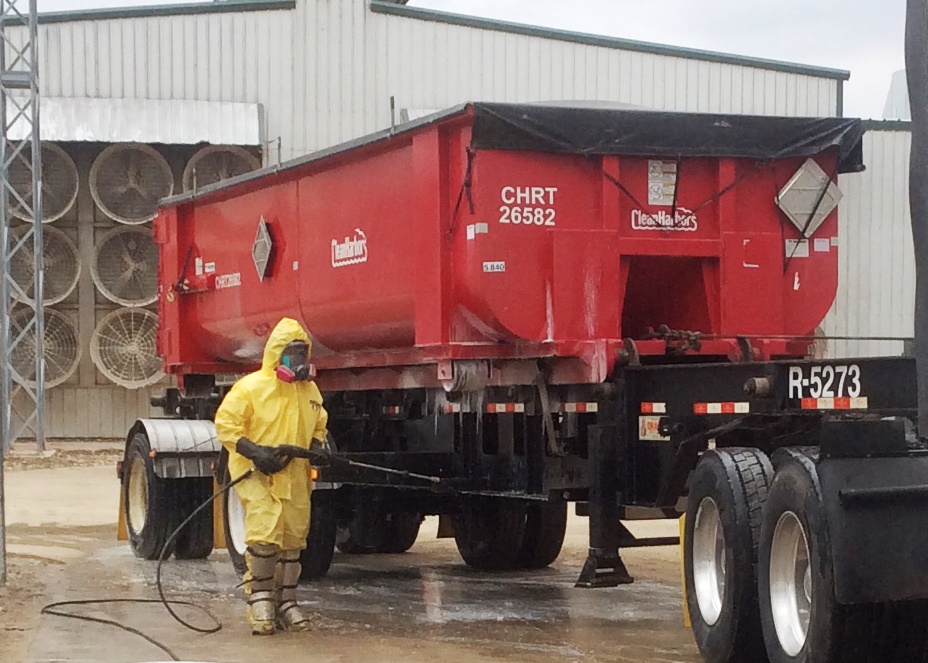
Another lesson that’s come out of the past few outbreaks is this: We need to rethink our farms and food systems.
“A certain way to reduce risk of zoonosis and emerging infectious diseases globally … is to reduce dependence on intensive animal-based food production systems,” says Stevenson, pointing to findings in a recent report by the International Union for Conservation of Nature.
That involves eating less meat as a society, as well as using well-planned approaches to growing plants and raising domestic animals in ways that are considered ethical, ecologically sound, fair and humane. Experts also point out that it’s vitally important to protect nature so that wild animals stay healthy and aren’t forced to interact with people — a common effect of deforestation and development.
Reducing our dependence on industrial farms is not always cheap, but it saves major costs in the long run as farmers create life-sustaining systems that keep animals healthy and best prevent disease. According to an international team of animal disease and ecology experts, “Even a one percent reduction in risk of viral zoonotic disease emergence would be cost-effective.” In contrast, conventional commercial poultry farms are owned by major corporations that appear to give little thought to any tasks other than maximizing profits. On these major farms, which are prevalent in the United States, birds are commonly sick, crowded and in constant pain.
Besides causing major animal welfare concerns, industrial farming has hugely negative effects on the environment, creating serious pollution and contributing to the climate crisis through generation of greenhouse gases. U.S. farmworkers are often people of color and are often exploited.
Experts say shifting our ideas of what we accept as normal in our food system, both nationally and globally, could significantly transform the way we value people, nonhuman animals, and the planet, and in turn could prevent the next pandemic — to which we’re all vulnerable.
But is there hope for achieving that? The experts we spoke with aren’t too sure.
“These companies have immense political power, which they use to influence policymakers and to obstruct reforms,” says Stevenson. “They are able to shape the narratives that entrench the status quo.”
Until we learn from the lessons of this and other outbreaks, it seems the status quo will continue to involve lethal bird flu and devastating impacts on domestic and wild birds.
Previously in The Revelator:
Could Trump’s Government Shutdown Cause Outbreaks of Wildlife Disease?
![]()

